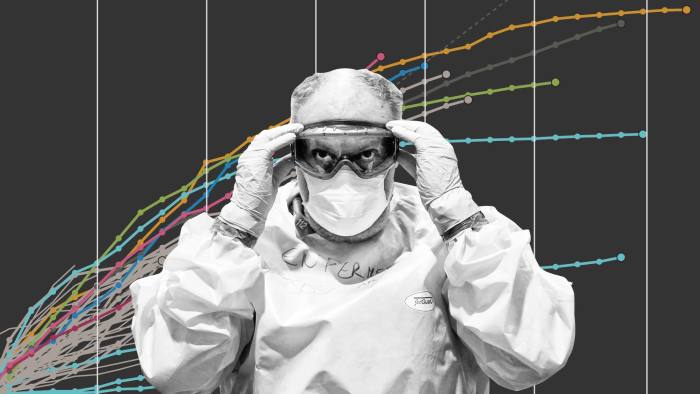
EU watchdog hopeful most banks can absorb €380bn pandemic hit
Buffers ‘should be sufficient’ to protect lenders in short term, says European Banking Authority
by Stephen Morris, Martin ArnoldEuropean banks are expected to suffer a hit of up to €380bn to their capital due to the economic disruption from coronavirus, but most should be able to absorb the losses, according to the EU banking watchdog.
The European Banking Authority said it had carried out a “sensitivity analysis” based on the results of its 2018 stress test of the sector to determine the likely increase in non-performing loans and increased riskiness of their loan books because of the virus emergency.
The share prices of many European banks have fallen almost 50 per cent this year as investors have anticipated how the economic and financial turmoil caused by the pandemic will hurt their weak profitability and may force some to raise extra capital.
However, José Manuel Campa, chairman of the EBA, told the Financial Times: “The starting position of the banks [was] very good at the end of last year [and] the measures put in place since the last crisis have held up.
“As a result of all that, the buffers are large and should be sufficient in the short term so we are not worried about [the banks’] short-term ability to lend to the economy and in the long term to have sufficient buffers to absorb the eventual losses,” he added.
Editor’s note

The Financial Times is making key coronavirus coverage free to read to help everyone stay informed. Find the latest here.
Assuming an increase of between €169bn and €291bn in bad loans at the biggest eurozone banks, the EBA said the hit to their capital would be accentuated by an overall increase in the likelihood of borrowers to default.
The watchdog’s estimate for the capital likely to be wiped out by the crisis ranged from 2.3 to 3.8 percentage points of banks’ total risk-weighted assets — the main way they measure how much capital they need. Every percentage point of risk-weighted assets is worth about €100bn of capital.
At the end of 2019, banks had capital equivalent to nearly 15 per cent of their risk-weighted assets — roughly 3 percentage points above the level required by regulators. Several measures introduced by regulators in response to the virus have provided banks with capital relief equivalent to about 2 percentage points of risk-weighted assets.
The FT reported this year that European Central Bank officials have held high-level talks with counterparts in Brussels about creating a eurozone bad bank to remove billions of euros in toxic debts from lenders’ balance sheets — but the plan has faced opposition from some EU governments.
Recommended
Martin Wolf
A no-deal Brexit amid the pandemic would be disgraceful
The EBA, which postponed a planned stress test of the sector until 2021 because of the virus, said: “As the crisis develops, banks are likely to face growing non-performing loan volumes, which can reach levels similar to those recorded in the aftermath of the sovereign debt crisis.
“Capital levels should help banks withstand the impact of Covid-19,” it said, adding: “There could be weaker banks (those with pre-crisis problems or heavily exposed to the sectors more affected by crisis) facing more severe challenges.”
Total NPLs in the biggest 121 eurozone banks had more than halved in six years to €506bn, or 3.2 per cent of their loan books, by the end of last year. But Greek, Cypriot, Portuguese and Italian banks still have NPL ratios above 6 per cent.
The watchdog said that 18 per cent of European bank loans were to companies in sectors expected to be hardest hit by the disease, including hotels, restaurants, manufacturing, electricity and transport and storage.
However, it said there were a number of caveats to its estimates, including the government guarantees and moratoria being offered on bank loans in various countries, which could shield lenders’ balance sheets from the impact of the crisis.
It warned that its analysis was only for credit risk, and there could be “additional losses from market, counterparty and operational risk”. It added it had not taken account of the rise in bank lending since the start of this year, as many companies drew down credit facilities.